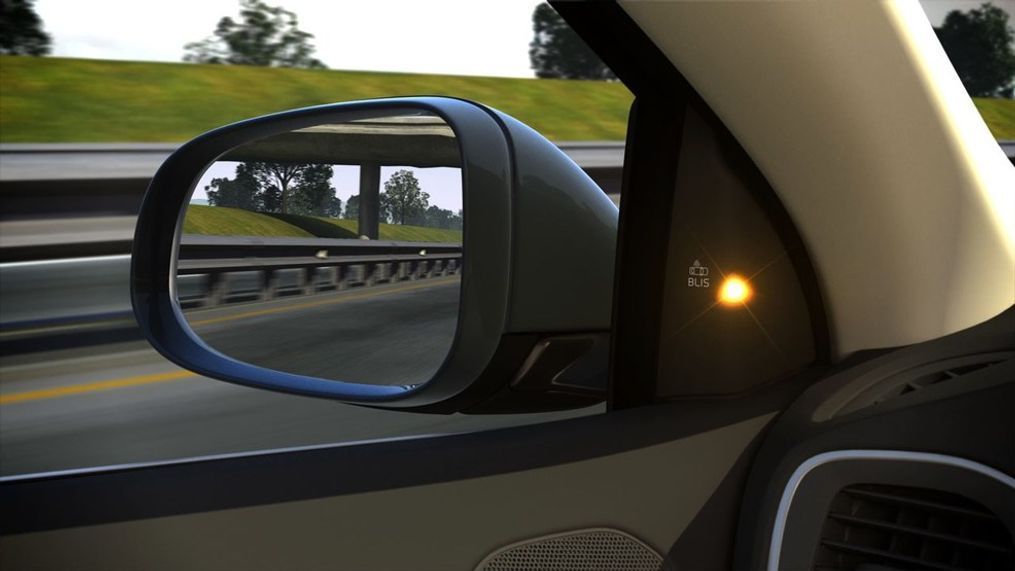5 features we love on cars

Modern cars are chockfull of high-tech features. Most of them are options, and as we’ve previously noted, there are some we really don’t care for. However, there are several new features that we think are worth every penny.
After asking my auto-writing brethren about some of their fave features, I compiled a top-five list that I absolutely agree with and would put on any vehicle wish list.
Blind-Spot Monitoring
While you should always be comfortable with the size proportions of a vehicle you own, an extra set of eyes never hurts. And that’s exactly what blind-spot monitoring is.
Various automakers have different executions for this helpful feature. Some have a light on the side-mirror that illuminates if someone is in your blind spot. Others issue an audible alert in addition to the light. I’ve recently seen some automakers include the blind-spot monitoring on head-up displays so it depends less on peripheral vision.
The light portion of this feature usually kicks in whenever anyone is in your blind spot just to give you an additional heads up that you shouldn’t change lanes. The audible alerts come into play when you turn on your blinker or appear to start changing lanes, and someone is in your blind spot.
I’ve found this feature to be particularly useful in heavy highway traffic where it’s easy to miss someone who’s zipping in and out of traffic – even if you are watching your mirrors.
Back-Up Cameras
Back-up cameras become a federal requirement for all vehicles in 2018, but the mandate only requires a basic rear view. Back-up cameras come in truly handy when they add things like dynamic lines, multiple camera angles or 360-degree, top-down views – especially if you’re continually driving in tight quarters or have a larger vehicle.
Ostensibly, this feature is meant to save lives as it prevents drivers in larger vehicles from backing over pedestrians – namely small children. But it’s also a useful tool in fine-tuning your rearward driving.
The basic back-up camera is usually what’s standard fare, but as you upgrade your trims or add options, the other camera views are often an available feature. I find the 360-degree cameras to be most helpful when parallel parking or pulling in and out of alleys.
A recent test car didn’t have the 360-degree camera, but it did offer a rear top-down view that was particularly helpful as I backed into my garage and crept closer to the back wall.
Adaptive Cruise Control
Cruise control has been a favorite of road trippers who have long highway stretches and don’t want to get caught accidentally speeding. Adaptive cruise control is a relatively new feature that not only sets a constant speed but also uses radar to detect if anyone is going slower in front of you.
When it perceives a vehicle has moved into your lane at a slower speed, ACC will apply brakes and pace your vehicle with the slower moving one. As the lane clears, ACC will allow the vehicle to resume the preset speed.
Some ACC systems have stop-and-go functionality that will bring the vehicle to a complete stop and will restart when the vehicle in front moves within a certain time frame – usually 5 seconds. This is built for stop-and-go traffic and takes some of the stress off the driver during rush-hour commutes. This isn’t a text-and-drive crutch, but it does ensure a safe distance and helps prevent fender benders in the event of unexpected distractions – like a front-seat passenger who habitually likes to point and say, “Look over there.”
Heated and cooled seats
In addition to dual HVAC, I’ve come to call heated-and-cooled seats one of the marriage-saving features in modern vehicles. I’m always cold. My husband is always hot. With the heated-and-cooled front seats, we can each adjust to our comfort level, and we both drive happy.
While the heated seats are kind of like a heating pad inserted under the seating surfaces, the cooled seats usually operate like an air-conditioning system that blows cold air out of vents inside the seats. Both heated and cooled seats typically kick in before the HVAC system does, so it creates more immediate relief from the elements.
The great thing is this feature is starting to trickle down into more affordable vehicles. Sure, I’ve seen these heated-and-cooled seats on lux-level vehicles from Lexus and BMW, but I’m also starting to see them on Hyundai and Kia vehicles, too.
Remote Start
Remote start has been available on vehicles for several years now. It usually comes in the form of a button on a key fob. But you have to be within “striking” distance to start the vehicle using this method. I’ve been able to do it from office windows or my bedroom balcony, but if I get too far away from the car, it won’t work.
However, a newer, better remote start system is now available in today’s connected cars. If you have a car connected to an app, using remote start is as simple as opening the app and turning the car on. You can do this from any distance as long as your phone is connected to a data service.
A lot of these apps will also let you lock or unlock your car as well as check maintenance schedules and gas levels.
Lest you worry that someone could steal your car when it’s “on,” you should be aware that remote start only activates the heating and cooling systems in a kind of accessory mode. If someone actually tried to drive the car away, it wouldn’t go.
